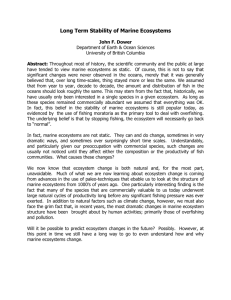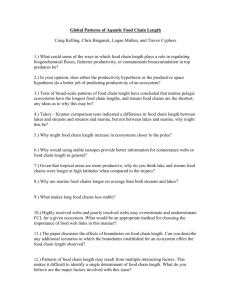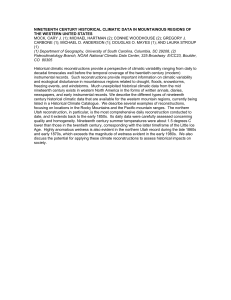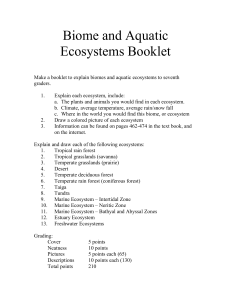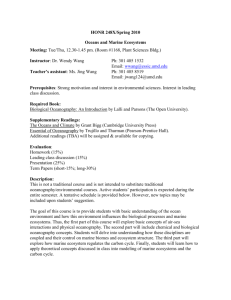Evaluating Effects Of Climate Change On Nekton Distribution In The
advertisement
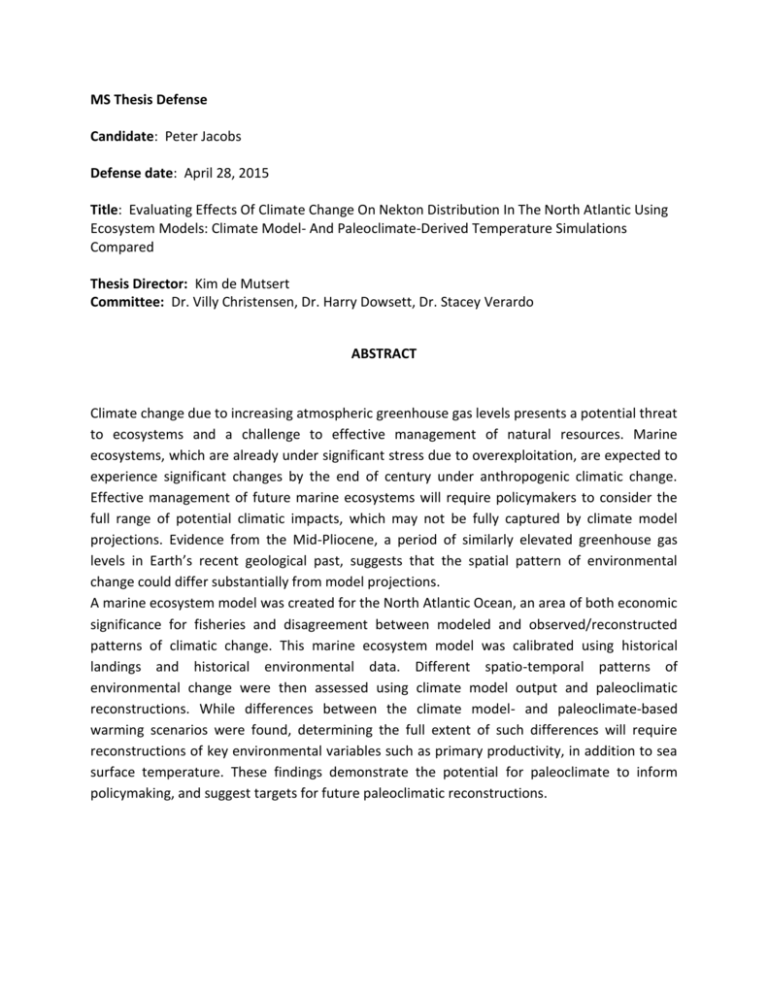
MS Thesis Defense Candidate: Peter Jacobs Defense date: April 28, 2015 Title: Evaluating Effects Of Climate Change On Nekton Distribution In The North Atlantic Using Ecosystem Models: Climate Model- And Paleoclimate-Derived Temperature Simulations Compared Thesis Director: Kim de Mutsert Committee: Dr. Villy Christensen, Dr. Harry Dowsett, Dr. Stacey Verardo ABSTRACT Climate change due to increasing atmospheric greenhouse gas levels presents a potential threat to ecosystems and a challenge to effective management of natural resources. Marine ecosystems, which are already under significant stress due to overexploitation, are expected to experience significant changes by the end of century under anthropogenic climatic change. Effective management of future marine ecosystems will require policymakers to consider the full range of potential climatic impacts, which may not be fully captured by climate model projections. Evidence from the Mid-Pliocene, a period of similarly elevated greenhouse gas levels in Earth’s recent geological past, suggests that the spatial pattern of environmental change could differ substantially from model projections. A marine ecosystem model was created for the North Atlantic Ocean, an area of both economic significance for fisheries and disagreement between modeled and observed/reconstructed patterns of climatic change. This marine ecosystem model was calibrated using historical landings and historical environmental data. Different spatio-temporal patterns of environmental change were then assessed using climate model output and paleoclimatic reconstructions. While differences between the climate model- and paleoclimate-based warming scenarios were found, determining the full extent of such differences will require reconstructions of key environmental variables such as primary productivity, in addition to sea surface temperature. These findings demonstrate the potential for paleoclimate to inform policymaking, and suggest targets for future paleoclimatic reconstructions.


